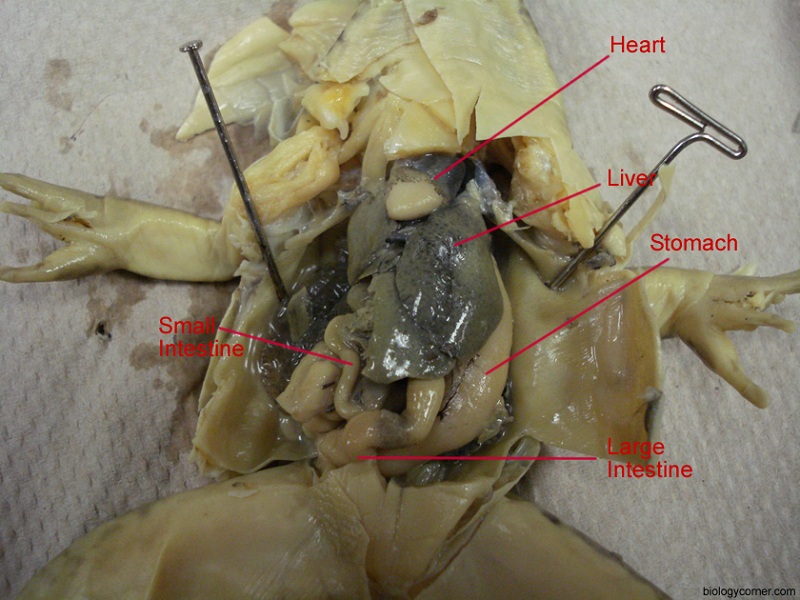Nutrition
The Dyeing dart frog's diet consists mainly of ants, beetles, flies, mites, spiders, termites, maggots, caterpillars, and essentially anything smaller than itself. This frog is known to be cannibalistic in its tadpole stage, and the parents often separate their young to avoid this common natural occurance.
Dyeing dart frogs, as seem in the video on the Adaptations page, are predatory animals that actively hunt prey. These animals ingest the bugs or poor young critter, digest it, and then secrete any excess waste. (My frogs happen to have designated a small corner of their tank to such business. They eat wherever flies happen to be and then defecate in the one corner.) As stated before, these frogs capture their prey with their tongue at close range and then "swallow" using their eyes.
Frog physiology is similar to many animals. They have stomachs, gall bladders, a large and small intestine, and other such organs. Food travels from the esophagus to the stomach where it is digested by chemical enzymes. The food then passes on to the portion of the small intestine called the duodenum, then the ileum, and from there on to the large intestine. In the duodenum, bile from the gall bladder secreted by the bile duct further breaks down the meal (which frogs often have swallowed whole). The food then goes on to the large intestine, which in a frog is also known as the cloaca. From here any unabsorbed materials are excreted through the anus. You can see many of these structures in the dissection of this leopard frog below. For more labeled images of the rest of the digestive structures, please visit the Gallery page.
